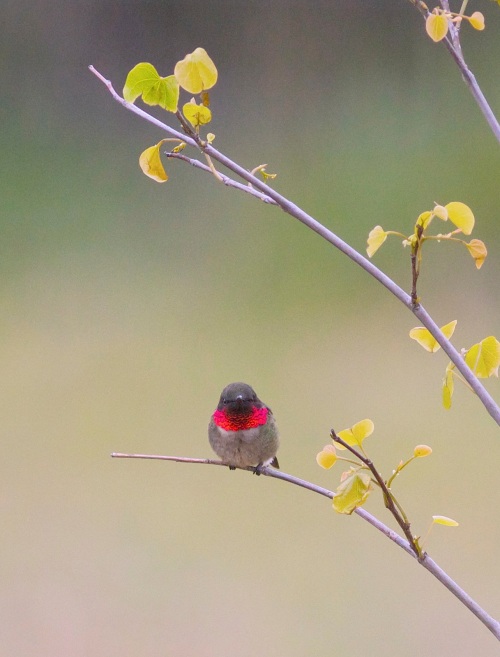Despite the cool, rainy, foggy weather, the regal eastern Kingbirds have been arriving this past week. Nearly every fence row has it’s share. Some will move on, but the pair that nested up high in our sweet gum tree last year has returned (photos taken with a 400mm lens yesterday):
With dark gray upperparts and a neat white tip to the tail, the Eastern Kingbird looks like it’s wearing a business suit. And this big-headed, broad-shouldered bird does mean business—just watch one harassing crows, Red-tailed Hawks, Great Blue Herons, and other birds that pass over its territory. Eastern Kingbirds often perch on wires in open areas and either sally out for flying insects or flutter slowly over the tops of grasses. They spend winters in South American forests, where they eat mainly fruit.
Cool Facts
- During the summer the Eastern Kingbird eats mostly flying insects and maintains a breeding territory that it defends vigorously against all other kingbirds. In the winter along the Amazon, however, it has a completely different lifestyle: it travels in flocks and eats fruit.
- Parent Eastern Kingbirds feed their young for about seven weeks. Because of this relatively long period of dependence, a pair generally raises only one brood of young per nesting season.
- It’s not called a kingbird for nothing. The Eastern Kingbird has a crown of yellow, orange, or red feathers on its head, but the crown is usually concealed. When it encounters a potential predator the kingbird may simultaneously raise its bright crown patch, stretch its beak wide open to reveal a red gape, and dive-bomb the intruder.
- The scientific name Tyrannus means “tyrant, despot, or king,” referring to the aggression kingbirds exhibit with each other and with other species. When defending their nests they will attack much larger predators like hawks, crows, and squirrels. They have been known to knock unsuspecting Blue Jays out of trees.
- One of the byproducts of being an insectivore is that both adults and nestlings regurgitate pellets of insect exoskeletons.
- Kingbirds sometimes catch small frogs, treating them the same way they deal with large insects: beating them against a perch and swallowing them whole. Eastern Kingbirds apparently rely completely on insects and fruit for moisture; they have never been seen drinking water.
- Kingbirds are “passerines,” a taxonomic group commonly referred to as perching birds or songbirds. But kingbirds and other flycatchers are in a different subgroup from true songbirds, and they don’t have nearly as complex voices. Rather than learning their calls they probably perform them innately. The young begin to give adult calls at about two weeks of age.
- The oldest Eastern Kingbird on record was 10 years, 1 month old.


Read Full Post »



























